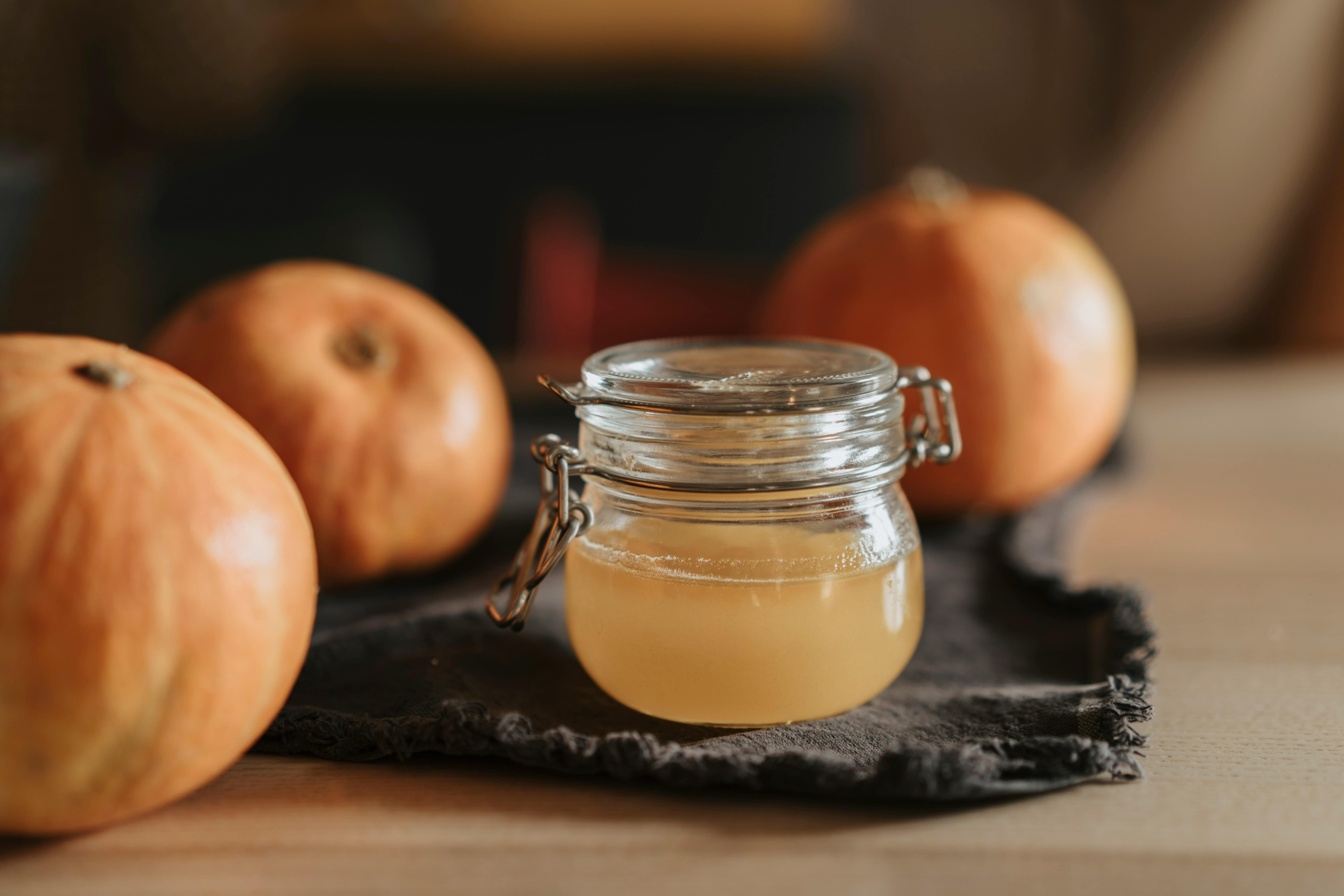Vinegar is a versatile and common kitchen ingredient used in a variety of dishes, sauces, and cleaning solutions. Distilled vinegar and vinegar are two types of vinegar – but what is the difference between them? Distilled vinegar is made by fermenting grain alcohol, while regular vinegar is produced by fermenting various alcoholic liquids such as apple cider, wine, beer, rice wine, or malt. The difference lies in the final product of each type of vinegar. Distilled white vinegar has a sharp, acidic taste and is mainly used for cooking and cleaning purposes. Regular (or “plain”) vinegar has a milder flavor and can be used for both culinary and cleaning purposes.Distilled vinegar, also known as white vinegar, is a clear liquid made from grain-based ethanol that has been converted to acetic acid. It is commonly used in cooking as a condiment and preservative and has a strong acidic taste. Distilled vinegar does not contain any of the other volatile components found in other vinegars, such as fruit or herb flavors and aromas, making it more suitable for certain recipes and cleaning applications.
What Is Vinegar?
Vinegar is a type of acidic liquid made through a process of fermentation, usually made from either grapes, apples, or rice. It has been used throughout the centuries for culinary purposes, for cleaning, and for its medicinal properties. Vinegar is highly acidic and has a sharp and pungent taste. It can be used as an ingredient in salad dressings, sauces, marinades, pickling solutions and many other dishes. It can also be used as a cleaning agent to help remove dirt and grime from surfaces. Additionally, vinegar has many medicinal uses including treating colds, weight loss, and skin care.
Ingredients of Distilled Vinegar
Distilled vinegar is a type of vinegar made from the fermentation of alcohol, usually ethanol. The main ingredients used in its production are water and ethanol. The fermentation process produces acetic acid, which is the primary component of distilled vinegar. Other compounds such as esters, alcohols, and aldehydes may also be present in small amounts. Distilled vinegar can also contain small amounts of minerals such as iron, phosphorus, and potassium.
The production of distilled vinegar involves several steps. First, the alcohol is fermented using bacteria such as Acetobacter aceti or Lactobacillus species to produce acetic acid. The acetic acid is then mixed with water and heated to separate out any impurities or solids that may be present in the solution. Finally, the mixture is allowed to cool and any remaining solids are filtered out before bottling.
Distilled vinegar has a wide range of uses in both cooking and cleaning applications. It can be used to add flavor to salads and other dishes, as well as for pickling vegetables and making sauces. In terms of cleaning applications, it
Ingredients of Vinegar
Vinegar is a liquid consisting of mainly acetic acid and water, with trace elements of other ingredients. It is made through the process of fermentation, where bacteria convert alcohol into acetic acid. The main ingredient in vinegar is acetic acid, which gives it its sour taste and pungent smell. Acetic acid is produced by bacteria during the fermentation process, and is usually found in concentrations of between 4 and 8 percent. Other ingredients in vinegar include small amounts of citric acid, lactic acid, tartaric acid, malic acid, phosphoric acid and ash. These acids give vinegar its sour flavor and potent odor. Vinegar also contains trace elements from the source material used to make it, such as apples or grapes. These trace elements include vitamins, minerals, amino acids and other compounds that contribute to its flavor and aroma.
Production Process of Distilled Vinegar
The production of distilled vinegar involves a few simple steps. Firstly, the raw material such as apples, corn, potatoes or sugar cane is crushed and then fermented to produce alcohol. This alcohol is then heated in a closed container until it produces acetic acid. The acetic acid is then cooled and filtered to remove any particulate matter before being placed into the final containers. The containers are sealed and aged for up to one year, allowing the vinegar to develop its flavor and aroma. After the aging process is complete, the vinegar can be sold or used in various recipes.
The production of distilled vinegar requires some specialized equipment such as fermentation tanks, distillation columns and filtration systems. It also involves controlling temperature and ventilation to ensure the desired quality of the product. The entire process takes several weeks to complete but results in a high-quality product that can be used for culinary purposes or even cleaning products.
Distilled vinegar is an important ingredient in many recipes due to its strong flavor and distinct smell. It can be used to pickle vegetables or fruit

The Production Process of Vinegar
Vinegar is a type of acidic liquid made through the fermentation of ethanol, which is produced by the natural sugars found in fruits and grains. The production process of vinegar involves several stages, starting with the preparation of the raw materials, through the fermentation and aging process, and ending with its final packaging.
The first step in producing vinegar is to obtain the raw materials that will be used for fermentation. This typically involves collecting fruits such as apples, grapes, or other types of fruit, as well as grains such as barley and wheat. These are then crushed to extract their juices or mashes. The mashes are then mixed with water and yeast to create a mixture known as a ‘mother’ which serves as the base for further fermentation processes.
Once this ‘mother’ is prepared, it is placed in vats where it undergoes a period of fermentation. During this stage, bacteria known as acetobacters convert the alcohol present in the mixture into acetic acid. This acetic acid gives vinegar its sour taste and characteristic smell. The length of time required for this process
Uses of Distilled Vinegar
Distilled vinegar is a versatile cleaning agent that can be used for a variety of purposes. It is made from grain-based ethanol that has been distilled and then infused with acetic acid, giving it a strong acidic taste and smell. Distilled vinegar is colorless and has no added flavoring or coloring agents. It is also often referred to as ‘white vinegar’ or ‘spirit vinegar’.
Distilled vinegar can be used for cleaning around the house, such as to remove soap scum from shower doors or to clean kitchen appliances. It can also be used as a laundry pre-treatment for stains and odors, or to reduce static cling in clothes. When mixed with water, it can be used as a natural all-purpose cleaner for countertops, sinks, floors, and other surfaces.
Distilled vinegar can also be used for gardening purposes. It can help control weeds and unwanted plants in the garden by being sprayed directly onto them. It is also an effective pest repellent when used on plants and flowers. Additionally, it can be mixed with baking soda to create a homemade fertilizer that helps nourish plants and vegetables without
Household Uses of Vinegar
Vinegar is a versatile product that has many uses in the home. It is an excellent and natural cleaner, as it can remove dirt, grease, and even mildew. Vinegar can also be used to deodorize carpets and other fabrics, and to freshen up garbage disposals. It can even be used to remove stains from clothing, making it a great laundry additive. Vinegar can also be used to clean windows and mirrors, as well as stainless steel appliances like stoves and refrigerators. Other common household uses for vinegar include removing mineral deposits from faucets and other plumbing fixtures, or to clean out coffee makers or tea kettles.
Vinegar has many uses in the garden too. It can help rid gardens of weeds, and it is often used as an effective insect repellent. Vinegar can also be used to restore the pH balance of soil that has been affected by too much fertilizer or pesticides. Additionally, it can be sprayed on plants to help prevent fungal diseases like powdery mildew or blight.
Vinegar is also a great ingredient

Conclusion
The difference between distilled vinegar and vinegar lies in their ingredients, production methods, and uses. Distilled vinegar is made from pure ethyl alcohol that has been fermented and combined with oxygen to create acetic acid. Vinegar, on the other hand, is a natural product made from grapes, apples, dates, or other fruits that are fermented through a process known as acetification. Both products are used for cooking and food preservation but have different flavors, acidity levels, and applications.
Ultimately, it comes down to personal preference when deciding between distilled vinegar and vinegar. For those looking for a milder flavor and higher acidity level, distilled vinegar is the best option. For those looking for a more complex flavor with lower acidity levels, vinegar is the better choice.

